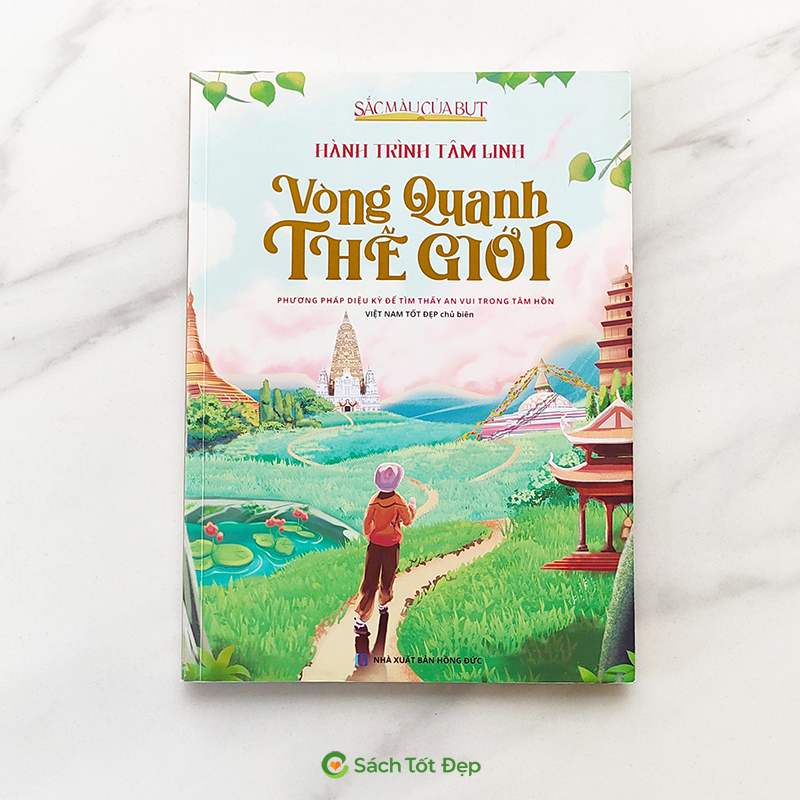The Symbolic Beauty of Buddhist Flags

Buddhist flag is an important symbol of Buddhism, widely used in Buddhist ceremonies and activities. The Buddhist flag has five vertical stripes, from top to bottom: blue, yellow, red, white, and orange, which symbolize the radiant light of the Buddhas. Each color on the flag has its own significance, representing the essential values of Buddhism, related to the Five Roots and Five Powers.
These are precious Buddhist practices that can elevate practitioners from worldly positions to spiritual attainments.
Each color has a different meaning:
White: symbolizes Faith
Red: symbolizes Effort
Yellow: symbolizes Mindfulness
Blue: symbolizes Concentration
Orange: symbolizes Wisdom.

Five Roots
These are the five roots, where “”””root”””” signifies the fundamental, the origin, the source from which all goodness arises.
In the “”””Discourse on the Higher Mind,”””” the tenth volume, it is explained that: “”””These five faculties are fundamental in giving rise to all virtuous phenomena and are therefore called the Five Faculties.”””” These five faculties are: Faith, Energy, Mindfulness, Concentration, and Wisdom.
They are the means of diligent discipline, the effective tools that help the practitioner progress on the path of spiritual practice, leading to realization.
1. Faith:
It is strong and firm belief. This faith is not like blind, unconditional belief, regardless of reason, found in many external religions. The faith here is the offspring of reason, the result of clear reasoning and careful observation.
2. Energy:
Energy is vigor. The faculty of energy is the courageous vigor in the practice path that never retreats. If there is a firm belief but no energetic effort to act upon one’s beliefs, that unwavering faith becomes useless and leads nowhere.
3. Mindfulness:
Mindfulness means remembering. Remembering what? The goal of mindfulness is to remember to contemplate various practices: mindfulness of giving (charitable acts); mindfulness of precepts (maintaining moral purity); mindfulness of meditation (thinking about the four meditation subjects to purify the mind, removing all defilements).
4. Concentration:
Concentration, or “”””Dhyana”””” in Sanskrit, means serene concentration, focusing on the right path to truly understand it.
5. Wisdom:
Wisdom is clear and penetrating insight, understanding the true nature of all phenomena. This wisdom has no discrimination because discrimination is the function of the conscious mind and is delusion.

Five Powers
The Five Powers are the five great abilities, the five divine powers of the Five Faculties. To put it simply: the Five Faculties are like five arms, and the Five Powers are the strength of those five arms.
1. Power of Faith: It signifies the divine power of faith, a great and miraculous strength arising from faith.
2. Power of Energy: It signifies the divine power of energetic vigor, an unshakable, persistent strength capable of overcoming all obstacles. This strength arises from energy.
3. Power of Mindfulness: It signifies the divine power of remembrance, a great and steadfast strength of mindfulness.
4. Power of Concentration: It signifies the divine power of focused thought, a great and mighty strength of concentration.
5. Power of Wisdom: It signifies the divine power of wisdom, an immeasurable strength arising from wisdom.
In general, these powers are the result of diligent cultivation of the Five Faculties. They are like a flame that ignites after one has exerted effort rubbing two pieces of wood together to create fire.

The Buddhist flag is not only a beautiful symbol but also a reminder of the core values of Buddhism. When Buddhist practitioners see the Buddhist flag, they recall the profound teachings of the Buddha and strive to attain enlightenment and liberation.
Beyond the significance of each color, the Buddhist flag also symbolizes the overall harmony among different religions, cultures, and ethnicities. The Buddhist flag is a symbol of peace, love, and understanding, bridging and connecting people of different nations around the world.
(phatgiao.org.vn)
Good Books – Buddha’s Books for Children
figure class=”wp-block-image”>
Sản phẩm bạn có thể quan tâm

The Colors of Buddha: A Spiritual Journey Around the World
Coloring book
135.000đ

Let’s play with Sen Sun: Ullambana Festival
Coloring book
28.000đ

Buddha’s Little Explorers: Where is Buddha?
Interactive book
59.000đ

Wisdom Combo: 5 books + 3 special gifts
Coloring book
280.000đ





